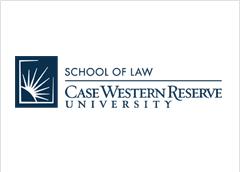Abstract
Over the past six years, pro-life advocates have used Targeted Regulation of Abortion Provider (TRAP) laws and state-level constitutional personhood amendments to end abortion. The United States Supreme Court’s recent opinion in Whole Woman’s Health v. Hellerstedt suggests that the TRAP strategy will give way to a greater push for personhood amendments. This is so for three reasons. First, Whole Woman’s Health undermined the woman’s-health basis for TRAP laws and may encourage advocates to refocus their efforts on fetal rights. Second, Whole Woman’s Health limited the types of statutes that can survive judicial scrutiny, but left constitutional amendments untouched. Third, with TRAP laws under attack, the pro-life movement’s only other sustained, institutional strategy is to push personhood amendments.
Whole Woman’s Health also reinforced the Planned Parenthood of Southeastern Pennsylvania v. Casey undue burden test. The law around abortion rights, therefore, has become less favorable to pro-life advocates. The fight over reproductive rights will thus become more overtly political. Because personhood amendments are broad and vague enough not to be facially unconstitutional, and because they engage voters’ social and moral preferences, they represent the political future of the pro-life movement. Advocates would, therefore, do well to concentrate on the political aspects of personhood amendments.
This Article illuminates those political aspects by analyzing the 2014 campaign against North Dakota’s personhood amendment, which is broadly representative of past—and probably future—campaigns from three vantage points. Historically, it places North Dakota’s campaign in the context of the post-Roe v. Wade fight over abortion rights and the probable effect of Whole Woman’s Health. Legally, this Article analyzes the salient legal issues arising from the amendment and its possible impacts, most importantly on reproductive rights, end-of-life care, and in vitro fertilization. Politically, the Article reports the results of a survey the author performed, which details why the North Dakota amendment failed so decisively at the ballot box. Whole Woman’s Health may signal a new era for reproductive rights; it will certainly mean that personhood amendments become more attractive to pro-life advocates. This Article provides the insight necessary to understand that shift.
Recommended Citation
Steven R. Morrison,
Personhood Amendments After Whole Woman’s Health v. Hellerstedt, 67 Case W. Rsrv. L. Rev. 447 (2016)
Available at:
https://scholarlycommons.law.case.edu/caselrev/vol67/iss2/5
